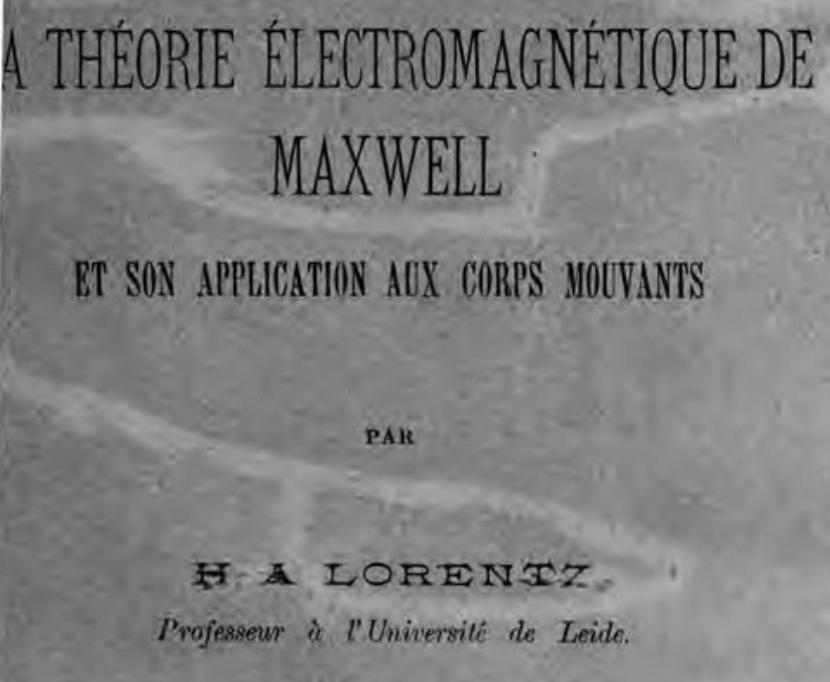The End of the Aether
(and the Beginning of Something
New)

After the
Michelson-Morley experiment,
aether theory reached a dead end.
Having the aether be
stationary with respect to
Earth contradicted Maxwell's
theory as well as many
astronomical experiments; however
having it moving with respect to
Earth contradicted the
Michelson-Morley experiment.
One of the
first scientists to
acknowledge this problem,
and propose a solution to
it, was Hendrik Lorentz.
Lorentz proposed that the
length of objects moving
relative to the aether
contracted in the
direction of motion. This
solution was able to
explain the null result of
the Michelson-Morley
experiment as the distance
the light traveled
contracted in the
direction of motion of the
aether. He first published
his theory in 1892, and
later on revised it till
the early 1900.
Though his theory did not
rise, due to a different
scientist's publication -
Albert Einstein.
|

The cover of Lorentz's book. Translation:
The Maxwell electromagnetic theory and its
application to moving bodies.
|
In 1905 Albert
Einstein published one of the most
influential physics papers in
history: On the
electrodynamics of moving bodies.
In this paper he described his
theory of special relativity. This
theory brought to an end the
theories of luminiferous aether by
using the principle of relativity,
that the laws of physics are true
in all frames of reference, and by
assuming that the speed of light
is the same in all frames of
reference.
However his mathematical outcome
was similar to that of Lorentz's
aether theory, and the mathematics
Lorentz developed, most notably
the Lorentz transformations, form
the basis of special relativity.
Though aether theory was
discarded, it still played a major
role in the development of modern
physics, and it paved the way for
our current understanding of the
world. The theory of the aether
shows that even physical theories
that are taken for granted can be
falsified; and that we must learn
to better understand our world,
even if that means abandoning the
ideas we assume obsolete.
The luminiferous aether might have
served its role, but similar ideas
of mediums (for example quantum
fields), that fill space, still
exist in modern physics. The story
of the luminiferous aether is an
important one in history of
physics, and its heritage is still
rich and relevant today.
Sources and Outside
Material
Homepage
|